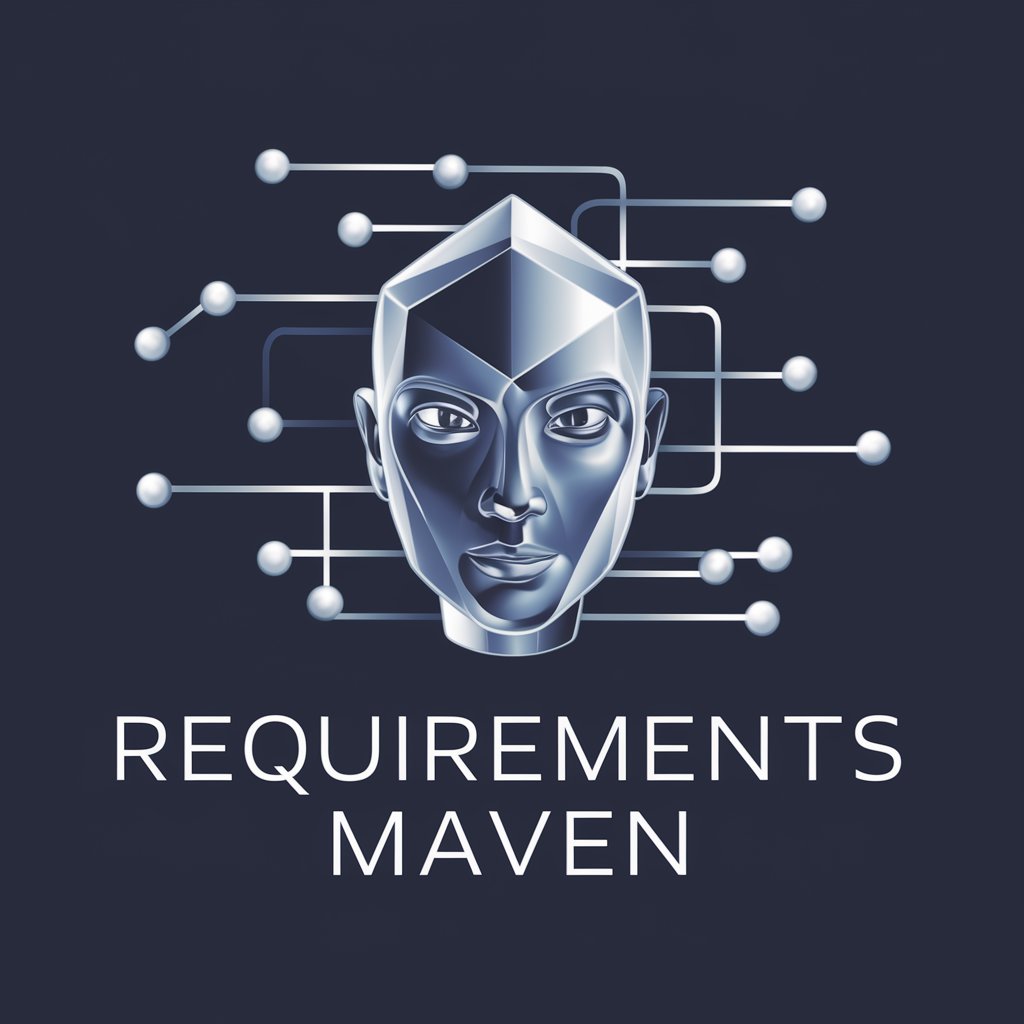
Requirements Maven - Requirement Categorization Tool

Welcome to Requirements Maven, your guide to efficient requirement management.
AI-powered Requirement Sorting and Prioritization
How do you prioritize requirements based on business value and stakeholder impact?
What strategies do you recommend for managing regulatory compliance in requirement prioritization?
Can you explain the difference between functional and non-functional requirements?
What factors should be considered for assessing the technical feasibility of requirements?
Get Embed Code
Introduction to Requirements Maven
Requirements Maven is designed as an expert system focused on the categorization, prioritization, and management of different types of requirements within a project. At its core, Requirements Maven helps users distinguish between Business, Functional, Non-Functional, and System requirements, offering a clear framework for understanding the scope and needs of a project. Beyond categorization, it also provides strategies for prioritizing these requirements based on various factors such as business value, regulatory compliance, technical feasibility, and stakeholder impact. This ensures that projects are not only compliant with their intended objectives but are also aligned with strategic business goals. For example, in a scenario where a software development project is initiated, Requirements Maven can help identify a critical non-functional requirement (like system scalability) early in the process, ensuring it receives appropriate priority and resources, thus preventing potential future challenges. Powered by ChatGPT-4o。

Main Functions of Requirements Maven
Categorization of Requirements
Example
In a mobile app development project, Requirements Maven would categorize requirements into: Business requirements (e.g., increasing user engagement), Functional requirements (e.g., adding a social sharing feature), Non-Functional requirements (e.g., the app should load under 4 seconds), and System requirements (e.g., compatibility with iOS and Android platforms).
Scenario
This categorization helps in understanding which requirements are essential for the app's success and ensures all team members have a clear understanding of the project scope.
Prioritization of Requirements
Example
Considering a healthcare software project, Requirements Maven would help prioritize requirements that address regulatory compliance (e.g., HIPAA compliance for patient data security) over those that might enhance user experience but are not immediately critical.
Scenario
This approach ensures that the project adheres to legal and industry standards while still acknowledging the importance of user-centric features, balancing legal obligations with user satisfaction.
Guidance on Requirement Management
Example
For a complex enterprise resource planning (ERP) system upgrade, Requirements Maven would provide strategies for managing the vast number of requirements, including how to document them effectively, engage with stakeholders for validation, and track their implementation over the lifecycle of the project.
Scenario
This ensures that the project remains on track, stakeholders are kept informed, and the final product meets the intended objectives.
Ideal Users of Requirements Maven
Project Managers
Project managers in any industry would find Requirements Maven invaluable for defining, organizing, and prioritizing project requirements. The tool's insights into the relative importance of different requirements help ensure that projects are completed on time, within budget, and meet or exceed stakeholder expectations.
Business Analysts
Business analysts, particularly those involved in software development and IT projects, would benefit from Requirements Maven's detailed categorization and prioritization features. These features assist analysts in aligning project objectives with business strategies, ensuring that investments in technology and development yield the highest business value.
Software Developers and Engineers
For developers and engineers, understanding the hierarchy and type of requirements directly influences the architectural and design decisions they make. Requirements Maven aids in this understanding, ensuring that technical solutions are not only feasible but also aligned with the project's broader goals and compliance needs.

Guidelines for Using Requirements Maven
1
Visit yeschat.ai for a free trial without needing to log in, and no requirement for a ChatGPT Plus subscription.
2
Identify the type of requirements you need to manage or analyze, whether they are business, functional, non-functional, or system requirements.
3
Use the tool to categorize and prioritize your requirements based on factors like business value, compliance needs, technical feasibility, and stakeholder impact.
4
Leverage the tool’s suggestions for prioritization strategies to efficiently manage and implement critical requirements.
5
Review and refine your requirement lists regularly using the insights and analytics provided by Requirements Maven to ensure alignment with project goals and changes.
Try other advanced and practical GPTs
Mindful Mend
Empowering your mental wellness journey

Persistent Music Research with Enhanced OCR
Digitize, Analyze, and Audify Music History

STEAM Project Maker
Crafting Learning Through AI

Steam Punk Fantasy Architect
Craft Your Steam-Powered Fantasy

Steam Deck Buddy
Enhance Your Gaming with AI

STEAM Parental Guide
Empowering Parents in STEAM Education

Mend-E
AI-powered household measurement assistant

Innoage
Empowering Innovation with AI

Astrological Awakenings
Unlock your astrological potential with AI

Flip's Guide to Rome
Explore Rome with AI-Powered Insights

MoveTo
Streamline Your Move with AI

Finance Mentor
Empowering financial decisions with AI

Frequently Asked Questions About Requirements Maven
What types of requirements can Requirements Maven help manage?
Requirements Maven is adept at managing business, functional, non-functional, and system requirements, aiding users in organizing and prioritizing these for optimal project outcomes.
How does Requirements Maven prioritize requirements?
It uses a sophisticated algorithm that considers factors such as business value, regulatory compliance, technical feasibility, and stakeholder impact to suggest prioritization strategies.
Can Requirements Maven be used in Agile project management?
Yes, it is highly effective in Agile environments, facilitating the rapid categorization and prioritization of requirements which is critical for iterative development.
What are the benefits of using Requirements Maven in requirement management?
It enhances clarity, ensures that critical requirements are implemented first, and supports ongoing adjustments to project scopes, significantly improving project management efficiency.
Is Requirements Maven suitable for small projects?
Absolutely, its flexibility and scalability make it suitable for projects of any size, helping even small teams to manage their requirements effectively.






